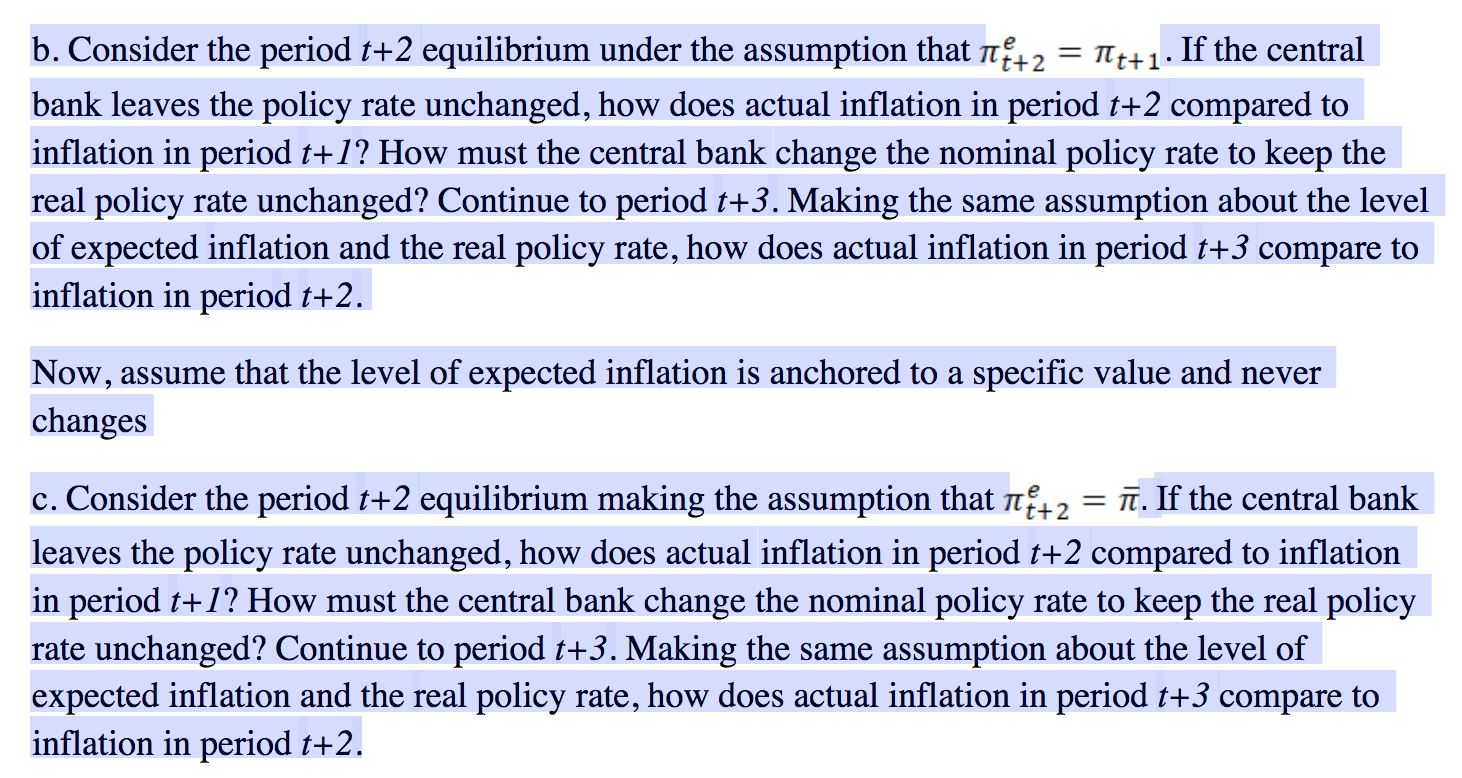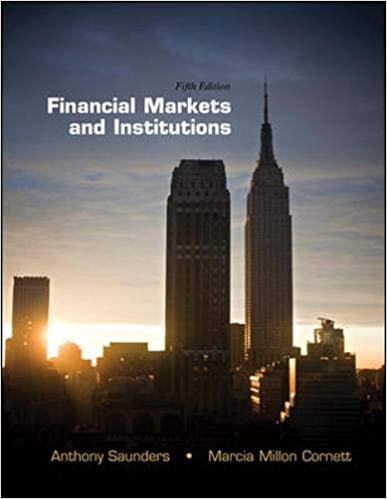2. Assume that the level of expected inflation, e, equals the lagged inflation, (-1), and the Phillips curve relation is given by . Beginin medium-run equilibrium where actual and expected inflation equals 2% in period t.Usegraphs and words to answer the following questions:a. Suppose there is an increase in consumer confidence in period t+1. How does the IS curve shift? Assume that the central bank does not change the real policy rate. How will the short-run equilibrium in period t+1compared to equilibrium in t?b. Consider the period t+2equilibrium under the assumption that . If the central bank leaves the policy rate unchanged, how does actual inflation in period t+2compared to inflation in period t+1? How must the central bankchange the nominal policy rate to keep the real policy rate unchanged? Continue to period t+3. Making the same assumption about the level of expected inflation and the real policy rate, how does actual inflation in period t+3compare to inflation in period t+2.Now, assume that the level of expected inflation is anchored to a specific value and never changesc. Consider the period t+2equilibrium making the assumption that . If the central bank leaves the policy rate unchanged, how does actualinflation in period t+2compared to inflation in period t+1? How must the central bank change the nominal policy rate to keep the real policy rate unchanged? Continue to period t+3. Making the same assumption about the level of expected inflation and the real policy rate, how does actual inflation in period t+3compare to inflation in period t+2.

2. Assume that the level of expected inflation, n, equals the lagged inflation, 7(-1), and the Phillips curve relation is given by 1 (-1) = (a/L)(Y Yn). Begin in medium-run equilibrium where actual and expected inflation equals 2% in period t. Use graphs and words to answer the following questions: a. Suppose there is an increase in consumer confidence in period t+1. How does the IS curve shift? Assume that the central bank does not change the real policy rate. How will the short-run equilibrium in period t+1 compared to equilibrium in t? b. Consider the period t+2 equilibrium under the assumption that 1+2 = 11t+1. If the central bank leaves the policy rate unchanged, how does actual inflation in period t+2 compared to inflation in period t+1? How must the central bank change the nominal policy rate to keep the real policy rate unchanged? Continue to period t+3. Making the same assumption about the level of expected inflation and the real policy rate, how does actual inflation in period t+3 compare to inflation in period t+2. Now, assume that the level of expected inflation is anchored to a specific value and never changes c. Consider the period t+2 equilibrium making the assumption that 1+2 = . If the central bank leaves the policy rate unchanged, how does actual inflation in period t+2 compared to inflation in period t+1? How must the central bank change the nominal policy rate to keep the real policy rate unchanged? Continue to period t+3. Making the same assumption about the level of expected inflation and the real policy rate, how does actual inflation in period t+3 compare to inflation in period t+2. 2. Assume that the level of expected inflation, n, equals the lagged inflation, 7(-1), and the Phillips curve relation is given by 1 (-1) = (a/L)(Y Yn). Begin in medium-run equilibrium where actual and expected inflation equals 2% in period t. Use graphs and words to answer the following questions: a. Suppose there is an increase in consumer confidence in period t+1. How does the IS curve shift? Assume that the central bank does not change the real policy rate. How will the short-run equilibrium in period t+1 compared to equilibrium in t? b. Consider the period t+2 equilibrium under the assumption that 1+2 = 11t+1. If the central bank leaves the policy rate unchanged, how does actual inflation in period t+2 compared to inflation in period t+1? How must the central bank change the nominal policy rate to keep the real policy rate unchanged? Continue to period t+3. Making the same assumption about the level of expected inflation and the real policy rate, how does actual inflation in period t+3 compare to inflation in period t+2. Now, assume that the level of expected inflation is anchored to a specific value and never changes c. Consider the period t+2 equilibrium making the assumption that 1+2 = . If the central bank leaves the policy rate unchanged, how does actual inflation in period t+2 compared to inflation in period t+1? How must the central bank change the nominal policy rate to keep the real policy rate unchanged? Continue to period t+3. Making the same assumption about the level of expected inflation and the real policy rate, how does actual inflation in period t+3 compare to inflation in period t+2








